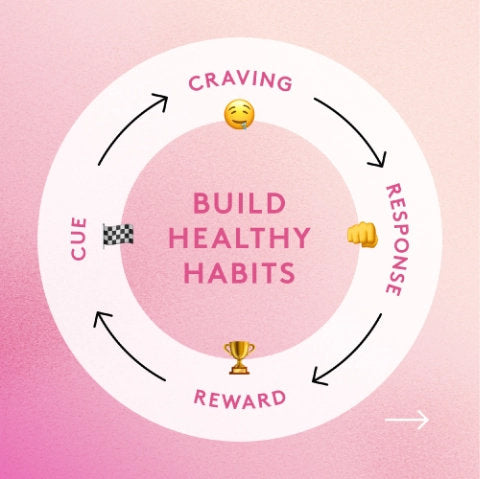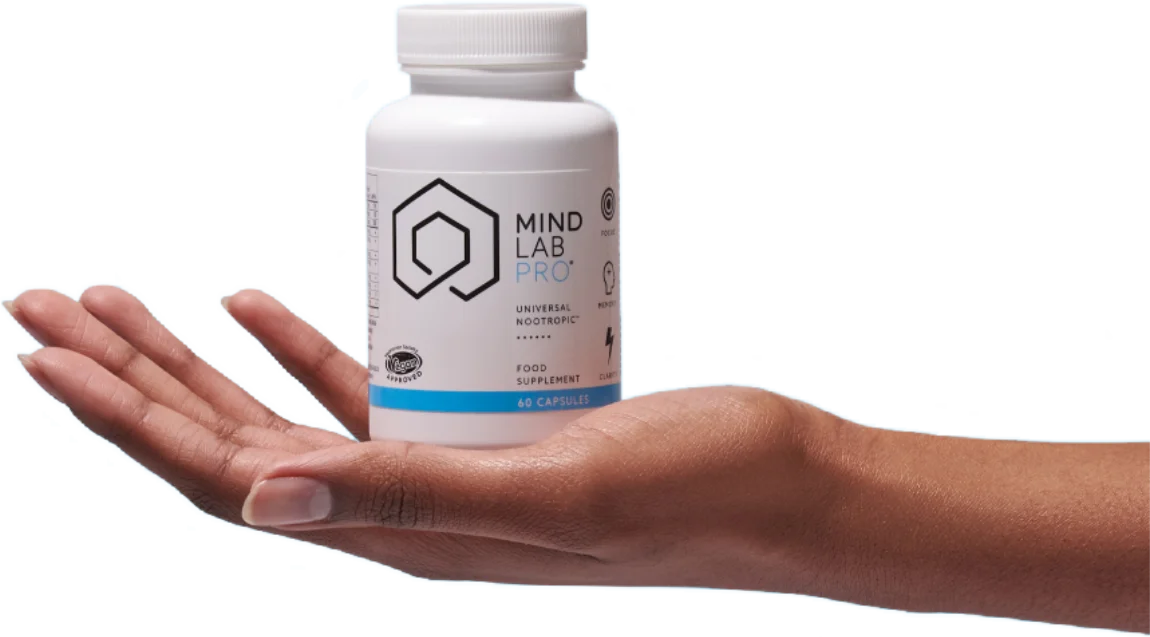Caffeine is one of, if not the most widely consumed stimulants in the world and can have some really awesome benefits when used correctly. It increases alertness, decreases drowsiness, and can do wonders for your athletic performance in optimal doses. But the thing with caffeine is that it functions like a drug—and addiction or tolerance can happen quickly.
If you’ve ever felt that your morning cup of coffee doesn’t work like it used to, you’re well adept to the nasty side of caffeine. Rather than cutting back, you up your intake to see if you can achieve the same benefits, and eventually, that wears off.
While not everyone metabolizes caffeine the same, tolerance happens for most people in some semblance, which is where caffeine cycling comes into the picture.
If you’re looking to get the most out of your caffeine consumption, caffeine cycling could be to your benefit. We’ve looked into the research, and we’re giving you what you should know about caffeine and performance, and if cycling on and off, it could be advantageous.
What Is Caffeine And What Does It Do?
Whether it’s a cup of coffee, tea, soda, energy drink, or fitness supplement, caffeine has made its way into several beverages. And chances are you’re familiar with what it is and what it does.
After consumption, caffeine is rapidly absorbed from the GI tract into the bloodstream and then systemic circulation 1. For most people, blood caffeine concentration hits their highest within 1 to 1.5 hours post-consumption.
But the reason caffeine elicits such profound effects on the central nervous system is because of its ability to pass the blood-brain barrier. Generally speaking, the half-life of caffeine ranges anywhere from 3 to 7 hours but can be influenced by several factors, including age, sex, medications, pregnancy, and smoking.
As for how caffeine works, its primary function is as an adenosine antagonist. Adenosine is a molecule that inhibits arousal and induces sleep. However, caffeine elicits most of its biological effects by antagonizing all types of adenosine receptors—A1, A2A, A3, and A2B 2. That’s because it’s structurally similar to adenosine and can bind to cell membrane receptors for adenosine, thereby blocking their action.
Adenosine receptors are found in several tissues throughout the body, including the brain, heart, smooth muscle, adipocytes (fat cells), and skeletal muscle 3. Through its antagonism of adenosine receptors, caffeine influences functions like sleep, cognition, learning, and memory.
The Benefits Of Caffeine For Performance
Most people are familiar with the benefits of caffeine for arousal, but what about exercise performance?
It’s been shown to acutely enhance several aspects of performance, including muscular endurance, movement velocity and muscular strength, sprinting, jumping, and throwing performance, along with several aerobic and anaerobic sport-specific actions 4.
- Endurance: Studies show that caffeine consumption can alter substrate utilization during exercise. Specifically, caffeine can decrease reliance on glycogen for energy and increase dependence on free fatty acid mobilization, which may improve endurance performance 4. One study found a significant increase in intramuscular fat oxidation during cycling following consumption of 5 mg/kg of caffeine 5. Another study found that high-dose caffeine (9 mg/kg) reduced glycogenolysis at the start of exercise (cycling to exhaustion at 80% VO2max), which resulted in improvements in performance due to enhanced reliance on both intra- and extramuscular fat oxidation 6.
- Weight/fat loss: Caffeine is also a potent thermogenic agent that can increase core body temperature to enhance calorie burn. Doses of 100mg may cause a significant thermogenic effect and increase energy expenditure 7.
- Speed and power: Research is still mixed on the role of caffeine for speed and performance, but some studies do support its benefit. A 2008 study looked at the effects of 5 mg/kg of caffeine in conditioned team sport male athletes and found improvements in performance for chest press and peak power, and the Wingate test 8.
What’s The Deal With Caffeine Tolerance?
Here’s the thing with caffeine. While it may enhance exercise performance in some capacity, it’s also really addicting—and if you’re a daily caffeine consumer, you’re probably aware of that.
It’s what we call caffeine habituation.
Caffeine habituation happens with regular caffeine use and can result in a subsequent reduction in the expected ergogenic effects, which ultimately blunts caffeine’s performance-enhancing impact during training and performance 9. This may be typical of daily consumption over 300mg.
While the body doesn’t depend on caffeine like it does with hard drugs, the effects may be somewhat similar because of structural changes in the brain.
Studies show that chronic caffeine consumption increases adenosine receptor concentration 10, 11. The number of adenosine binding sites in the brain increases in a dose-dependent manner, which attenuates caffeine’s stimulatory effects.
Simply put, the more adenosine receptors you have, the more caffeine is needed to block the effects of adenosine from binding. This is thought to be one of the reasons why habitual caffeine consumers may not experience the same cognitive effects (arousal, focus, etc.) long-term as they did initially.
The other mechanism suggested for caffeine habituation deals with metabolism. Caffeine is primarily metabolized by cytochrome P450 enzymes, and regular caffeine consumption has been shown to upregulate the production of this enzyme group, thereby increasing metabolization speed and decreasing efficacy in habitual users 12.
Regardless, caffeine habituation may cause problems for athletes or people looking for maximum ergogenic benefits from caffeine. Studies also suggest there are no additional benefits experienced from consuming caffeine doses above 9 mg/kg, and even with moderate-high doses, there may come a point where further caffeine ingestion doesn’t restore caffeine’s full ergogenic potential 9.
Related Post: How Long Does It Take to do a Caffeine Tolerance Reset?
Should You Cycle Caffeine?
With all of that said, whether you cycle caffeine will largely depend on your goals. As tolerance and/or dependence does build with caffeine, if you want to experience maximum performance benefits—power output, strength, speed, etc.—from caffeine consumption, it’s probably best to cycle on/off to avoid habituation and any decrements in performance.
Studies find that just four weeks of caffeine consumption was enough to reduce the ergogenic effects of caffeine supplementation 13. And if you’re looking for appetite suppression and endurance benefits, cycling caffeine will likely enhance its effects.
However, if you’re supplementing for endurance performance benefits, studies don’t find much benefit to cycling, as the benefits aren’t reduced much with time.
Long story short, if you’re taking low-moderate doses of caffeine, cycling likely isn’t completely necessary, but reducing intake could help enhance the effects. If you want to cycle, remove caffeine from your diet—that includes coffee, tea, caffeinated beverages, chocolate, etc.—for anywhere from two to eight weeks, then slowly reintroduce it. The duration in which you remove it may depend on previous consumption.
The Nasty On Caffeine: Withdrawal Symptoms
The physiological addiction to caffeine is debatable, but there’s a definite biological and behavioral dependence that comes with regular caffeine consumption, which means that when you cut it out, it can produce some unwelcome side effects.
Cessation of caffeine consumption is linked to several subjective effects, the most common of which include:
- Headache
- Fatigue
- Mental depression
- Lethargy
- Apathy
- Decreased alertness
For most people, withdrawal symptoms arise anywhere from 12 to 24 hours after cessation and peak around the 20–48-hour mark, usually subsiding after about a week 1.
References
- P Nawrot, S Jordan, J Eastwood, J Rotstein, A Hugenholtz, M Feeley. Effects of caffeine on human health. Food Addit Contam. 2003;20(1):1-30.
- JA Ribeiro, AM Sebastiã Caffeine and adenosine.J Alzheimers Dis. 2010;20 Suppl 1:S3-S15.
- TE Graham. Caffeine and exercise: metabolism, endurance and performance.Sports Med. 2001;31(11):785-807.
- ER Goldstein, T Ziegenfuss, D Kalman, et al. International society of sports nutrition position stand: caffeine and performance. J Int Soc Sports Nutr. 2010;7(1):5.
- D Essig, DL Costill, PJ Van Handel. Effects of caffeine ingestion on utilisation of muscle glycogen and lipid during leg ergometer exercise. Int J of Sports Med. 1980;1: 86-90.
- LL Spriet, DA MacLean, DJ Dyck, E Hultman, G Cederblad, TE Graham. Caffeine ingestion and muscle metabolism during prolonged exercise in humans. Am J Physiol. 1992; 262: E891-8.
- A Astrup, S Toubro, S Cannon. Caffeine: A double-blind, placebo-controlled study of its thermogenic, metabolic, and cardiovascular effects in healthy volunteers. Am J Clin Nutr. 1990; 51: 759-67.
- K Woolf, WK Bidwell, AG Carlson. The effect of caffeine as an ergogenic aid in anaerobic exercise. Int J of Sport Nutr Exerc Meta. 2008; 18: 412-29.
- C Pickering, J Kiely. What Should We Do About Habitual Caffeine Use in Athletes?Sports Med. 2019;49(6):833-842.
- JP Boulenger, J Patel, RM Post, AM Parma, PJ Chronic caffeine consumption increases the number of brain adenosine receptors. Life Sci. 1983;32(10):1135-1142.
- D Shi, O Nikodijević, KA Jacobson, JW Daly. Chronic caffeine alters the density of adenosine, adrenergic, cholinergic, GABA, and serotonin receptors and calcium channels in mouse brain. Cell Mol Neurobiol. 1993;13(3):247-261.
- C Doepker, HR Lieberman, AP Smith, JD Peck, A El-Sohemy, BT Welsh. Caffeine: friend or foe? Annu Rev Food Sci Technol. 2016;7:117–37.
- R Beaumont, P Cordery, M Funnell, S Mears, L James, P Watson. Chronic ingestion of a low dose of caffeine induces tolerance to the performance benefits of caffeine. J Sports Sci. 2017;35(19):1920–7.













